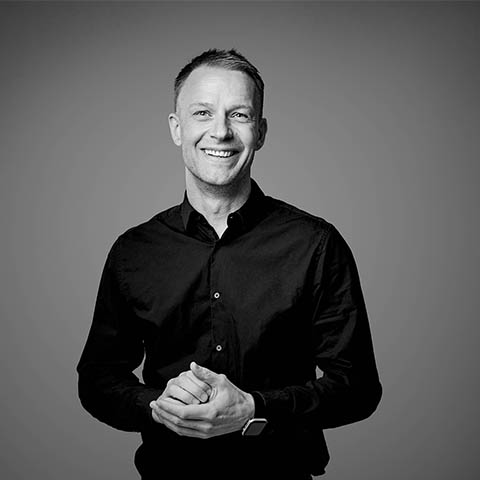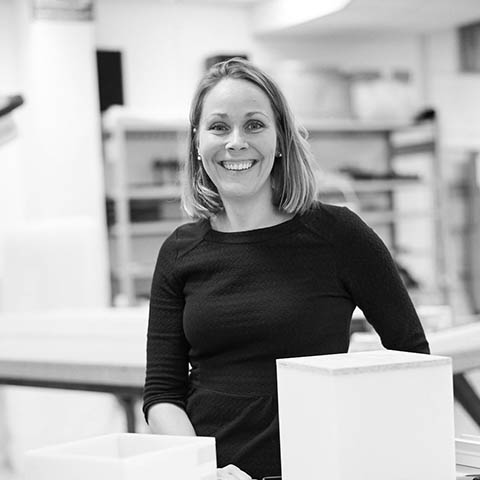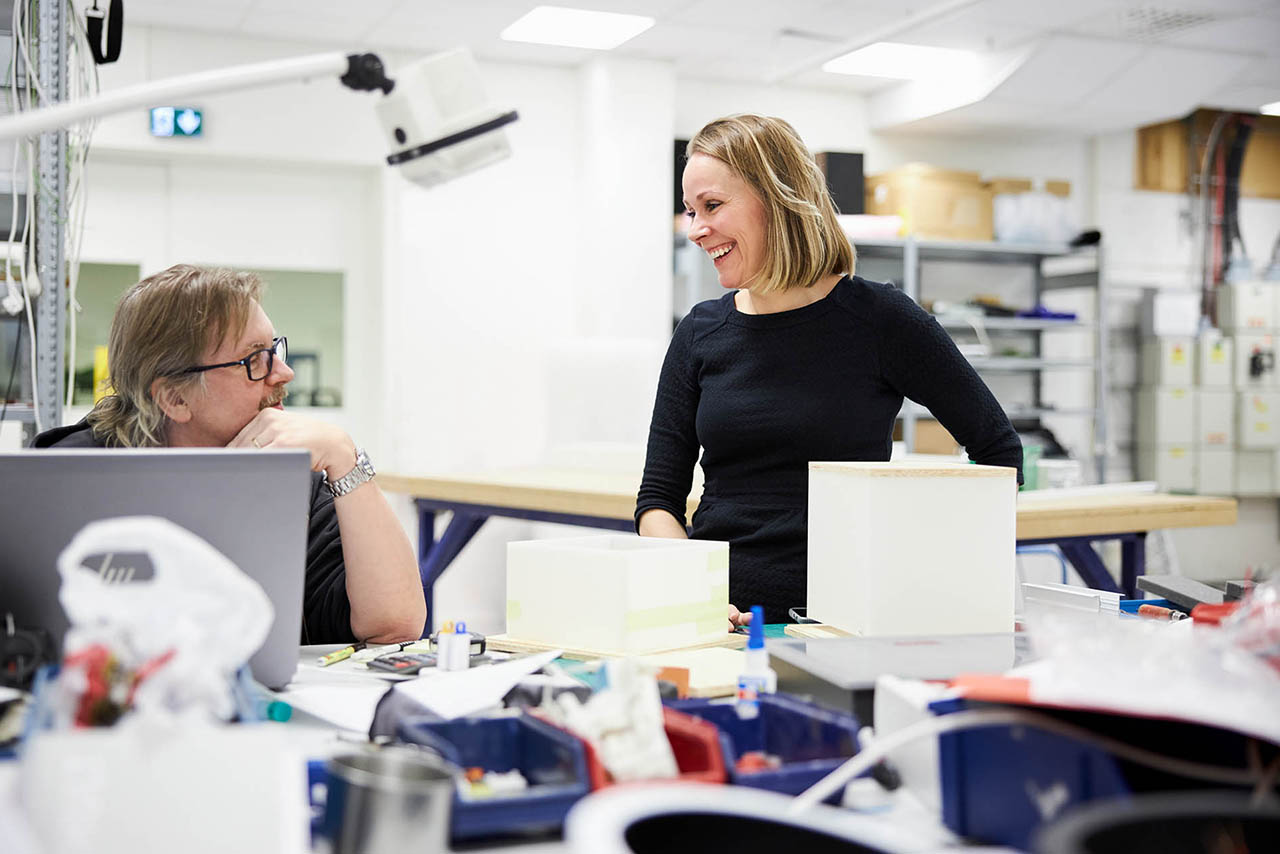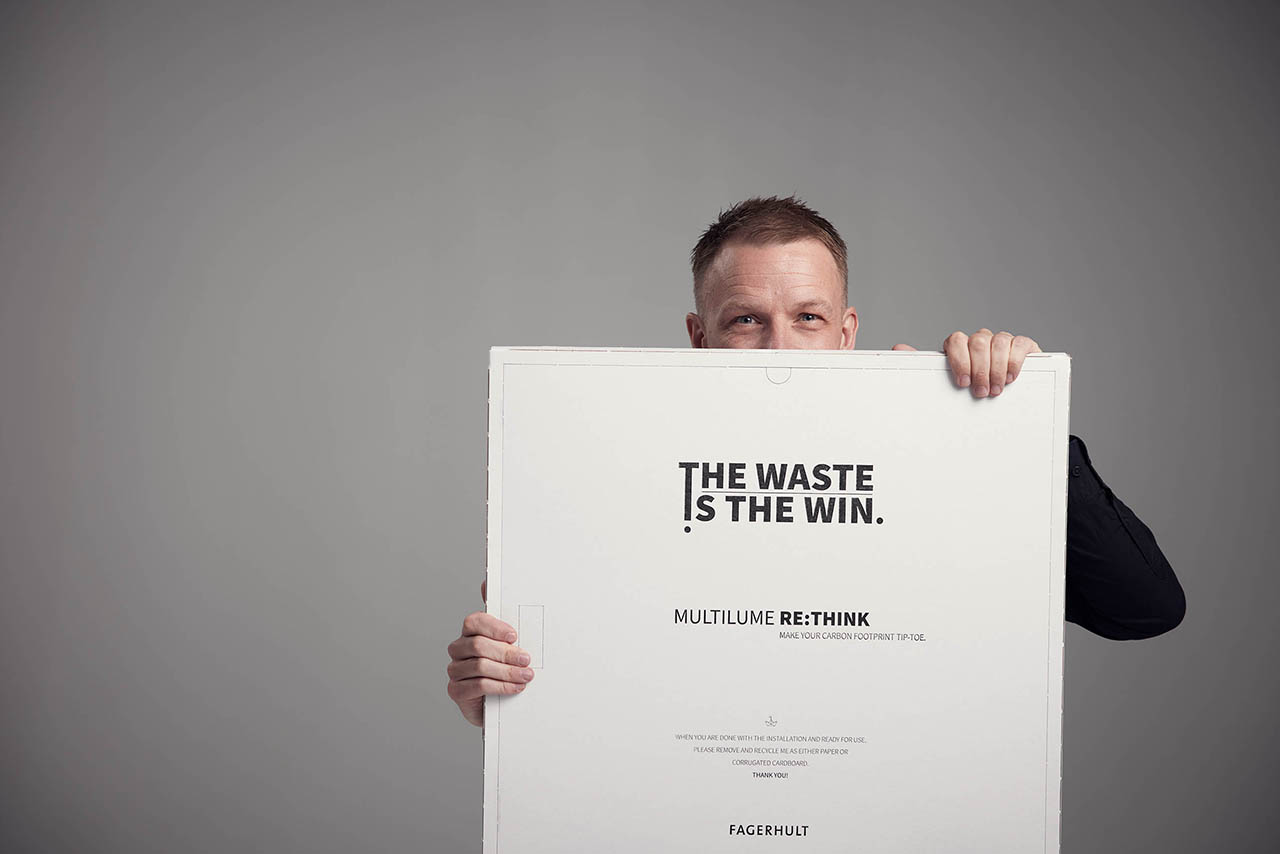
The waste is the win - making your carbon footprint tip-toe
Sustainability and environmental awareness are (thankfully) on everyone’s agenda these days. And for real change to happen, we all need to make new choices. Meet some of the people at Fagerhult, that has challenged themselves into thinking outside the box, resulting in - a little box.
Fagerhult has been a manufacturing company for over 75 years. Throughout this time, we have always been careful with details and quality. But, what was right and real in 1945 is no longer an undisputable fact. In 2020 we started a rigorous sustainability work, with goals linked to the UN's global goals for sustainable development, to provide direction for our journey.
Among other things, we want our luminaires to consist of 80% renewable or recyclable materials before 2030. Multilume Re:Think, made of Solid Board, an entirely new material for the industry, is one step on that journey. Here you meet some of the people behind it.
OUR FRIENDS, AND OUR FRIEND’S FRIEND
But, where to start when you are a producing factory facing a challenge as big as this? Elin Stjernholm, R&D Manager at Fagerhult, explains.
– Well, first up we´ve started to introduce our suppliers to our ambitions in 2030 - how can we reach this quite ambitious goal together? We got a more in-depth knowledge about our suppliers; where their material comes from, which energy they use in their production and so on. But we did not stop there- the suppliers supplier was also of huge interest for us.
Parallel to the external sustainability check with the suppliers, Elin describes that there was also an internal process at Fagerhult.
– To get the big picture we made a life cycle analysis* for some of our products, Elin Stjernholm says. It was to clarify how big impact the material had, since we already knew that it mattered. We´ve always optimized the material in our products and made conscious choices, and moving towards more sustainable materials feels both natural and necessary. On top of this, we´ve also started projects with different universities in Sweden, focusing on sustainable materials.
 "One of the first times we showed it, one of the reactions was “is that a pizza box or what is it?" Martin Bååth, design engineer
"One of the first times we showed it, one of the reactions was “is that a pizza box or what is it?" Martin Bååth, design engineer
PAPER PLANES AND PIZZA BOXES
So, in order to put the knowledge into practice, the design engineers at Fagerhult got together for their reoccurring innovation forum to come up with new ideas. Martin Bååth, design engineer at Fagerhult, describes:
– The team and I started to brain storm and asked ourselves – would it be possible to change the material in a recessed flatpanel, our Multilume Slim? It is one of our high runners, and already a very good luminaire, so it would be quite a challenge. We reached out to one of our suppliers, and started to discuss how it could be done. Together we did some prototypes in different materials, until we found a material that would be suitable for this luminaire.
Even though it was the sort of innovation that the team was looking for, it was not an immediate hit for everyone.
– I remember one of the first times we showed it, and the reaction was “is that a pizza box or what is it?”, Martin says with a laugh. But most of all, my co-workers had an open mindset regarding this paper experiment, and it was exciting to continue the development process.
MAKING THE (PAPER) CUT
Since this material was totally new to all the members in the project, it raised new questions for the team to handle. Would it be safe? Would the luminaire break during installation? Is it possible to develop a luminaire in paper, without compromising with the light quality?
– Given that this material is organic, it behaves completely different compared to the dead materials that we are used to, such as steel and plastic, Martin Bååth explains. We needed to investigate thoroughly how the material would react to temperature shifts and moisture. Would it shift form or shape because of it? That material tolerance was something we needed to include in the design.
– Never have we tested so much, as on this one, says Martin Bååth with a smile. This material has cleared all tests that we need to perform, according to branch standards. It has really been a journey, and we have learned so much by bringing in a new material. Our supplier has been so helpful in learning us understand the whole chain. We have aquired a great in-depth knowledge on what we can do with this material, and it’s not only for packaging industrial. You can do so much more. For an example a very good flat panel.
 "There is a lot of interesting investigations going on, and sustainability is certainly in the air." Elin Stjernholm, R&D manager, Fagerhult
"There is a lot of interesting investigations going on, and sustainability is certainly in the air." Elin Stjernholm, R&D manager, Fagerhult
NO MORE PLASTIC IN 2030?
But how will the future look, will we all have paper luminaires at home in 20 years?
– Well, we are just getting started, says Elin Stjernholm. It might be a luminaire with a lot of renewable- and recycled material. Or maybe, if we let ourselves think out of the box, which in important in this stage, there will be a technical plastic with no oil offered on the market. Maybe we can reduce so much material that the focus is just on the light source and its distribution, or perhaps can we take it all the way? Reused luminaries with light as a service? There is a lot of interesting investigations going on, and sustainability is certainly in the air.
* A life cycle assessment is an overall calculation of a luminaire's environmental impact during different stages of its life - such as manufacturing, distribution, usage, recycling etc.
If you wish to learn even more on Multilume Re:Think, you find the campaign site here.
TEXT MARIA VÅRENIUS
PHOTO PATRIK SVEDBERG
Related News

Fagerhult explores circular process in aluminium recycling pilot project
In a pilot project, Fagerhult and Hydro Extrusion Sweden have explored circular processes for the reuse of aluminium – focusing on efficiency and preserved material properties. With the goal of reusing high-quality, extruded aluminium from end-of-life luminaires in the future, Fagerhult, together with Hydro, has explored the possibility of circular models in a pilot project.“Many of our luminaires have an aluminium body, and we want to ensure that they can be optimally recycled without losing the quality or properties of the material. In collaboration with Hydro Extrusion Sweden, we are now exploring how we can close the loop,” says Niclas Thulin, Head of Sustainability at Fagerhult.Recycling in a new lightThe pilot project was initiated in connection with Norwegian Property's ambition to achieve more efficient energy use at Snarøyveien 30 in Oslo. Fagerhult then saw an opportunity to reclaim a large number of Notor luminaires, and the possibilities of recycling and circular processes were explored.“Reuse was not possible, but since there were a larger number of luminaires, we wanted to make the best use of the material,” explains Niclas Thulin. “When extruded aluminium luminaires are recycled, it is common for the material’s properties to undergo downgrading, and then be used in die casting, for example. In this project, we wanted to close the loop and ensure the qualities of the material by allowing the original producer to process the material again. The pilot project resulted in the aluminium being melted down and reshaped, Niclas Thulin continues. Throughout the pilot project, the focus has been on circular processes and sustainable innovations. The goal has been to take new steps beyond the norm and the expected – and to overcome the major challenge of recycling used extruded aluminium – while preserving material properties.“Aluminium is a uniquely durable metal that can be recycled almost endlessly, but like all materials, it needs to be handled responsibly,” says Kristian Frisk, Account Manager at Hydro Extrusion Sweden. “Together, we were now able to recycle the equivalent of 1,300 kg of aluminium in the pilot project, but the big gain is the insights we will take to future projects.”Long-term solutionsWith a long-term perspective and an aspiration to contribute to sustainable development, Fagerhult has pushed the boundaries of what was previously possible and taken a major step towards meeting the demand for new circular solutions.“Together with Hydro Extrusion Sweden, we have closed the chain and demonstrated that it is possible to create new circular processes where all our aluminium luminaires can be handled circularly in the future,” concludes Thulin.
Sim Sala BIM! The revolution of the construction process
The construction and real estate market is undergoing a major change where digitization plays the leading role. The magic is spelled BIM – Building Information Modeling. BIM is the new way of planning and implementing construction projects and interior designs, enabling a more efficient construction processes where selection of methods, materials and products can be evaluated at the design stage. By creating a virtual 3D model of the construction project, you get a tool that rationalizes the project, improves the budget and significantly reduces the risk of mistakes and additional costs. The 3D model can be used for simulation and verification and before the actual building process has begun.The virtual 3D model is filled with BIM-objects, advanced data files based on real products and constructions. The BIM-objects are provided by manufactures from various industries involved, like building elements, windows, plumbing, kitchens, flooring, coating, furniture and lighting. Img 1 FAST GROWING TREND ”Planning with BIM-objects is a strong international trend, today companies as well as governments are implementing BIM-strategies in order to improve quality and effectiveness within their building processes. In Great Britain BIM is legislated in public procurement and we expect followers”, explains Magnus Karlsson, business developer at BIMobject. BIMobject is a Swedish company providing a global platform for BIM-objects, helping producers to market their products to architects, construction engineers, consultants and other important decision makers. Today BIMobject has approximately 1.2 million professional users all over the world. CONTENT IS KING ”Our ambition is to help our clients to establish a dialogue with the architect in an early stage, by providing relevant and detailed product knowledge of premium technical quality. You see, a BIM-object is not only a 3D model. The BIM-object also contains all imaginable information about the product and its properties. The platform even allows the architect to have direct contact with the producer. If you are an architect working in Germany you can get direct access to the company’s German representative ”, says Magnus.The BIMobject platform works as a community where producers are offered help with developing and publishing content and quality verifications. For architects and other professional users, the membership is free at the moment. The BIM-objects at BIMobject are offered in different file formats like ArchiCAD, Revit and/or other-files according to the producers’ standards.Download track controls also ensures that users get information when or if products have been updated or discontinued. Q Magnus THE BUILDING’S DIGITAL TWIN Magnus Karlsson predicts an even closer cooperation between providers and architects as the BIM revolution facilitates technical dialogues in an early stage. ”Content and communication will have equal importance as price and delivery in planning and procurement. The BIM 3D-model and its objects will also facilitate facility management when the project is completed. The model is the buildings’ digital twin, offering information about all its components, and how they are to be served and maintained. For example: If you need to change a light source in a luminaire, the electrician doesn’t have to check it out IRL, the information about the light source is provided by the BIM-object within the model.” According to Magnus, BIM is a powerful way of working that will change the construction industry in its core. “We are experiencing an exciting time of advanced digitalization and in the long run, there are no options – you have to jump on the BIM wagon.” FACTS: HOW TO WORK WITH FAGERHULT AND BIM To facilitate and offer improved effectiveness in large scale construction or renovation processes, Fagerhult offers BIM-objects for all major luminaire series – for example the new Dwide range. The BIM-objects are available for download at the BIMobject community. The objects are presented as Revit-files with information about versions, dimensions, materials, colour and other product properties. You can also get information about lighting properties, installation and inspiring application suggestions. Fagerhult’s BIM-objects do not include ies-files, however these can easily be imported when visualizations are needed. For download please visit bimobject.com or fagerhult.com.

